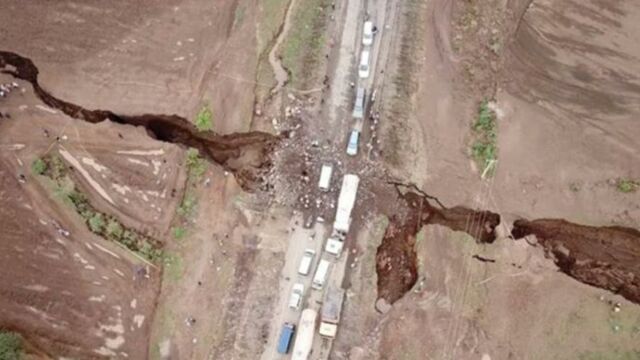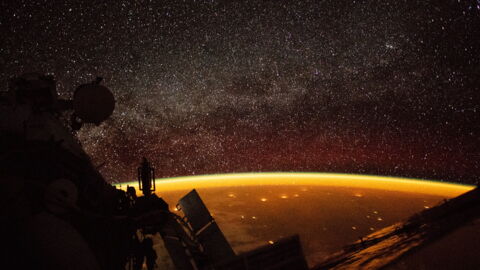The events behind this news took place on the morning of 19 March 2018. A gigantic fault appeared in the middle of the Mahiu-Narok road in Kenya. Going down to more than 15 metres deep and stretching 3 kilometres long, this impressive scar follows the heavy rains that hit the country at the time.
Discover our latest podcast
According to geologists, it is likely that the fissure existed previously and was filled with volcanic ash from nearby Mount Longonot. The water from the rains would then have washed away the ash, leaving the scar. However, it could be the mark of a much more profound and spectacular phenomenon: the splitting of the African continent.
Frequent tectonic activity, a sign of profound changes
This is not the first time that the Mahiu-Narok road has been damaged. Once again, the road was filled in to allow traffic to resume as soon as possible. However, this temporary solution may not be enough in the long term. Julius Korir, the infrastructure manager explains:
There seems to be a weakness in this area.
Researcher Lucia Perez Diaz of Royal Holloway at the University of London writes on The Conversation:
The Earth is an ever-changing planet, although in some ways the changes that drive it seem almost invisible to us. But every now and then, something dramatic happens that causes researchers to re-ask the question of how the African continent split in two.
When the planet gets a rifting
The Earth's lithosphere is formed by the crust and the upper part of the mantle of our planet. This structure is divided into several tectonic plates, which move relative to each other. The forces that cause these movements can also cause some plates to break up and create new islands above the waves, drifting on the asthenosphere.
When the lithosphere is subjected to a horizontal extension force, it stretches and becomes thinner. It will eventually fracture, leading to the formation of a rift valley.
This process is accompanied by increased volcanic and seismic activity and, if it continues successfully, can lead to the formation of a new ocean basin.
This is what happened about 138 million years ago when Africa and America separated to form the Atlantic Ocean. And this is what is happening now in the Great Rift Valley, a geological feature stretching for almost 3,000 kilometres between the Near East and southern Africa. This rift valley bisects the Horn of Africa to the east, giving rise to the Nubian Plate on one side and the Somali Plate on the other.
A multiple Africa is on the way
This rifting (tearing of the lithosphere), which began about 20 million years ago in the Miocene, could well lead to the individualisation and oceanisation of the Somali plate in the next few million years. In short, Africa could well be split in two. This geological activity 'became visible when this large fault appeared in south-west Kenya,' says Perez Diaz.
The weakening of the lithosphere in the Great Rift Valley is caused by a plume in the asthenosphere, the layer beneath the lithosphere. This pocket of magma presses against the asthenosphere and this pressure, combined with an increase in heat, weakens the lithosphere, stretches it and will eventually lead to its fracture.
At present, it is difficult to say whether the crack that appeared in Kenya is a direct result of this rift system. It could also be linked to volcanic activity in the region, which is itself a result of the rifting process. In any case, there is no reason to be alarmed: the break-up of Africa is only expected in a few tens of millions of years. So you have a bit of a head start to make arrangements.















